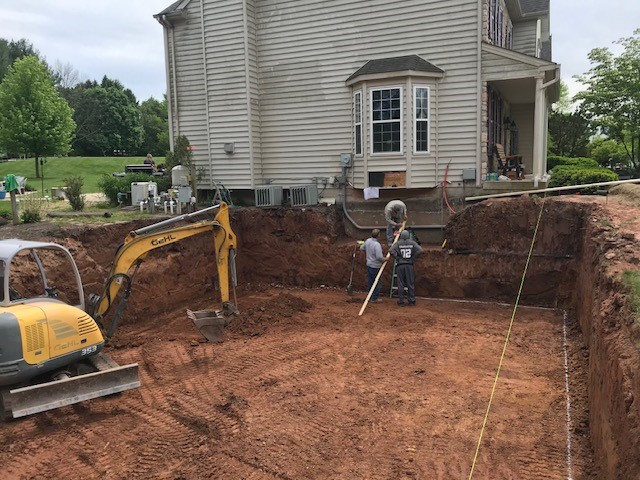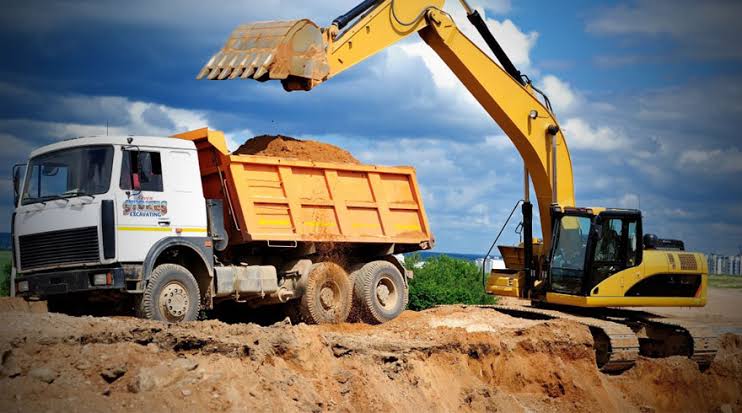Residential Excavating Ohio - Specialized Excavation for Ohio Houses
Residential Excavating Ohio - Specialized Excavation for Ohio Houses
Blog Article
Revealing the Art of Excavation: Pro Tips for Safe and Efficient Digging
In the realm of excavation, the mastery of safe and productive digging is an art form that requires understanding, adherence, and precision to recognized practices. As dirt is turned and earth is relocated, the details of excavation expose themselves, demanding an eager understanding of tools, soil composition, safety and security methods, and ecological factors to consider. The know-how needed to navigate these components properly can imply the difference in between a successful excavation task and a prospective disaster. By unwinding the layers of this elaborate procedure, a world of strategies and understandings awaits those looking for to raise their excavation abilities to brand-new heights.
Significance of Correct Equipment
To guarantee the safety and security and performance of any kind of excavation task, making use of the appropriate equipment is critical. Excavation jobs vary in scope and complexity, varying from little household landscaping tasks to large-scale building and construction tasks.
These flexible devices come in various dimensions to fit different project needs. Tiny excavators are excellent for smaller jobs, while larger excavators take on a lot more substantial projects efficiently.
Excavators succeed in tasks that require pressing big quantities of dirt or particles. By spending in the proper equipment, excavation jobs can be completed safely, on time, and with accuracy.
Understanding Soil Make-up
A detailed grasp of soil structure is essential for implementing excavation tasks with accuracy and safety. Understanding the different types of soil is crucial as it straight influences excavation approaches, tools option, and total task performance.
Sand fragments are the biggest and supply great drain however provide little cohesion. Silt particles are smaller sized than sand yet bigger than clay, using moderate drainage and cohesion. Clay fragments are the tiniest and supply high cohesion but poor water drainage. Raw material, such as rotting plant product, affects dirt fertility and security.
Before starting excavation, conducting dirt examinations to determine its make-up and features is crucial. This info helps in choosing the appropriate devices, carrying out safety steps, and establishing excavation techniques customized to the details soil problems - excavating ohio. By recognizing soil composition, excavation experts can enhance project results while making certain safety and adherence to finest practices
Precaution and Protocols
Recognizing soil make-up is the keystone whereupon safety actions and methods for excavation projects are constructed, ensuring the wellness of employees and the success of the venture. There are several vital actions that must be executed to minimize threats and stop mishaps. when it comes to security during excavation.
Firstly, before any excavating commences, a thorough evaluation of the site should be conducted to determine any type of potential threats such as below ground energies, unstable dirt problems, or close-by structures that could position a threat. It is vital to have a competent person oversee the excavation process to make sure that all safety and security methods are adhered to purely.
Additionally, all employees entailed in the this hyperlink excavation should be appropriately educated in secure excavating practices and the appropriate procedure of tools. By sticking to these safety procedures and methods, excavation projects can be completed efficiently and without incident.
Reliable Excavation Preparation
When beginning on an excavation job, precise planning is necessary to ensure performance, security, and successful end results. Reliable excavation planning entails several essential actions that are crucial for the smooth execution of the job. The initial step is to carry out a comprehensive site evaluation to determine any possible dangers, such as underground utilities or unstable soil conditions. This information is important for establishing a detailed excavation strategy that consists of security measures and take the chance of mitigation strategies.
When the website evaluation is full, the next action is to produce a clear timeline and schedule for the excavation tasks. This includes figuring out the sequence of tasks, equipment demands, and workforce allotment. Correct scheduling helps prevent hold-ups and ensures that the task remains on track.

Furthermore, communication among all employee is paramount during the preparation stage. Clear instructions, normal updates, and reliable coordination are vital for an effective excavation task. By investing effort and time in thorough planning, excavation teams can dramatically enhance efficiency, decrease dangers, and attain effective end results.

Handling Environmental Factors To Consider
With boosting emphasis on ecological sustainability in building practices, taking care of environmental factors to consider has become an essential element of excavation projects. Excavation tasks have the potential to influence the surrounding environment via soil disintegration, sediment drainage, habitat disturbance, and contamination of water resources. To alleviate these dangers, it is necessary to execute ideal practices that prioritize environmental security.

Moreover, correct waste monitoring is crucial to stop soil and water contamination. Implementing procedures for the disposal of hazardous materials, recycling of waste materials, and minimizing making use of hazardous chemicals can dramatically lower the ecological influence of excavation tasks. By incorporating these methods into excavation planning and execution, construction companies can make certain that their tasks are not just safe and productive yet likewise ecologically responsible.
Conclusion
To conclude, understanding the art of excavation needs a complete understanding of appropriate equipment, dirt structure, safety measures, and reliable planning. By following these standards and considering Visit Website ecological aspects, excavations can be conducted securely and effectively. It is essential to focus on security and productivity in every excavating project to make certain successful end results.
As soil is transformed and earth is relocated, the complexities of excavation disclose themselves, demanding an eager understanding of devices, dirt structure, safety and security procedures, and ecological considerations.To make sure the safety and security and efficiency of any kind of excavation job, using the appropriate devices is critical.A thorough grasp of dirt composition is essential for executing excavation jobs with accuracy and Our site safety. Comprehending the various types of soil is crucial as it directly affects excavation methods, equipment choice, and overall job performance. By comprehending dirt structure, excavation specialists can boost project results while making sure safety and security and adherence to best methods.
Report this page